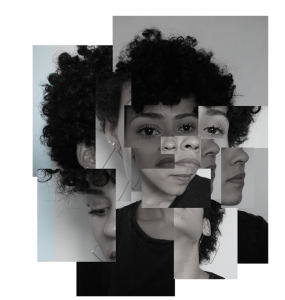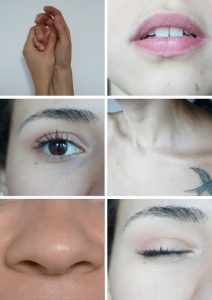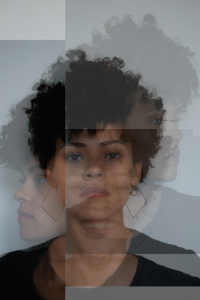Being In My Body
By Natalia Figueredo
The other day whilst listening to a podcast, I heard something interesting about my country. In the black market of passports, the Brazilian passport is the most expensive. The reason a Brazilian fake ID is so overpriced is because anyone can be Brazilian. This information about being Brazilian took me back to a documentary called “Negritudes Brasileiras” – Brazilian Blackness – by the sociologist and YouTuber Nátaly Neri. In the documentary, black women and experts give testimonials about their experiences and shared knowledge, explaining how race has been established in Brazil, from the period of slavery, to miscegenation linked to the valuation of whiteness, colourism, identity building throughout the country’s history, to the myth of racial democracy. Pointing out the plurality of blackness, they clarify what it means to be black in Brazil today. Watching the documentary and listening to the podcast, I reflected on who I am, thus undergoing an exercise in representing myself in the context of Brazilian identity.
“There was something that was instituted very early on in Brazilian education, which is racial mixing … while for the rest of the world racial mixing was seen as a sign of backwardness of inferiority and barbarianism, here it was reassigned as a positive aspect of Brazilian Culture. There was a vested interest in glorifying miscegenation.” (Negritudes Brasileiras, 2018, 00:8:00)
As a young girl, understanding myself was always very confusing. Sitting on the fence – neither black nor white – I have always been a person that felt I needed to change something in my body. I have heard many times the phrase ‘ugly but can improve’. Already inserted in this social logic and being so close to white privilege, perhaps I could improve also?
Regarding myself far from the image considered to be ‘ideal’, I began doing everything I could do to get closer to that pedestal. Straightening my hair, weight loss treatments, cellulite creams, braces, injections. The process of not recognizing myself and constantly searching in the people around me for something made me develop a kind of self-hate. I remember just feeling anger.
“Professor Kabengele Munanga said that the process of whitening may have failed physically, given that we live in a mostly black society, a century later. But he also said that the ideal of whitening became ingrained in our collective subconscious, which makes it difficult to construct any collective identity based on blackness, when the majority of the Brazilian population views white identities superior and seeks to attain it.” (Negritudes Brasileiras, 2018, 00:29:25)
After a long process of fighting with myself, when I was 18, I moved to São Paulo to do a degree in Architecture. The largest city in the country. All those people circulating around me, a thousand different bodies, clothes, colours. I felt so happy it seemed as if I was in a completely different world. The construction of my self-confidence had a lot to do with it. It was the first time that I declared a truce with my body.
“I’ve always really liked music. Music plays a big part in my life. I remember when that music channel started, that showed music videos. It was the first time that I started to see black people being represented in a positive way. I loved to see Salt-N-Pepa, Queen Latifah and other American rappers looking beautiful with great hair, fantastic make up. It was a revolution for me to have contact with that look, with their image. And they presented themselves in such a confident way, as if to say: “Look at me, I’m a beautiful and incredible black woman.” That’s something very positive about black Americans. I think it was the processes of emancipation which they went through throughout their history that helped them to construct a more positive image of themselves.” (Negritudes Brasileiras, 2018, 00:44:29)
During the holidays, in one of those years at university, I decided to go with my friends to an island called Cardoso. Packing my bags to go, I had set myself the challenge of not looking in the mirror during the entire trip. I left behind my flat iron, hairdryer and cosmetics. After 15 days, on my way home, I saw myself in the bus station bathroom. I was there for few minutes, just looking my hair half straight, half curly, my face without makeup. Then, I remember, with a certain feeling of lightness, sleeping throughout the whole trip back.
Once back to reality, and continuing my attempts to comprehend my identity, I went to a meeting about cultural resistance in São Paulo. A man said at this meeting: ‘It is not possible to fight against racism if we hate ourselves’. It was a ‘booooooom!’ in my mind. You know when suddenly things just make sense? Yeah, there I realized that hating my body was just an exercise in reproducing which society had taught me to do. Frantz Fanon in Black Skin, White Masks says that for people who have been dehumanized their entire lives to understand themselves in a group is essential to being humanized and then being able to place themselves in the dialectic of self and other. That idea of self-hate is also developed by Robin Batista in this article.
“Recognizing that racism acts in plurality, is also a way of working towards a cure, and understanding that we aren’t just one thing.” (Negritudes Brasileiras, 2018, 00:28:56)
Supported by these questions and surrounded by a new aesthetic in São Paulo, I went to the hair salon in a cry of freedom and had my hair cut as short as my ego allowed at that moment. I laughed and thought, ‘I look like my mum, finally I look like someone who looks like me.’
“When I understood that I didn’t need to be gorgeous, I felt free.” (Negritudes Brasileiras, 2018, 00:22:05)
It was an amazing feeling. During the following weeks, the more I looked at myself in the mirror, the more I enjoyed it. I spent hours and hours seeking for references and a new approach. One day having a conversation with friends about style, someone said, “Nat, for example, she is mulata. She is a good example of Brazilian!” Now that I know about blackness, I ask myself, do I have to be a black woman? How to explain and also understand that I don’t need a stereotype?
“The idea of racial democracy is a narrative that denies dissent. To state that you are black is often simply an affirmation, but for many it means looking for conflict. ‘Why do you need to cause trouble? In Brazil we’re all mixed race. Why are you saying that you’re black? That doesn’t exist here.’ Likewise, we can also think that there is the same problem, when more and more white people are confronted and encouraged to identify as white. This is often seen by many as completely absurd. ‘Why do you have to go and say that?’” (Negritudes Brasileiras, 2018, 00:14:00).
The whitening project in Brazil started just before the abolition of slavery in 1888 by the Brazilian government, stimulating European immigration. The policies of miscegenation are a central point in the understanding of colourism in Brazil. The attempt to reduce blackness by diluting skin tone is the basis of the civilising project in the country. This process culminated in what is today known as the myth of racial democracy, the one that describes Brazil as a paradise for the three races, in other words, the one that suggests: “Anyone can be Brazilian”. However, it was the result of a eugenic project which attempted to erase the black and indigenous population of the country, distancing blacks and Indigenous people from their ancestors. Thus, the figure of the ‘Mulato’ (a light-skinned black person) became a symbol of success for this project.
When I first recognised myself with similarities to the image of a ‘Mulata’ it made me feel good, I thought: “Great! I fit in the Brazilian beauty standard”. However, this process of recognising my own identity or rather race comes from a social environment that denies Blacks (and also Indigenous people) the right to participate in the nation. To the extent that the concept of ‘mulato’ is related to a project that aimed to erase the black traces in Brazilian society. In this sense, the lack of representation of non-white people has a lot to do with this feeling of acceptance. I mean, all this is important because racism is a violence that pervades the body. Thereby, the way we see ourselves and the way we feel is fundamental to transform racist constructions linked to aesthetics. Our hair and our body are tools of resistance!





